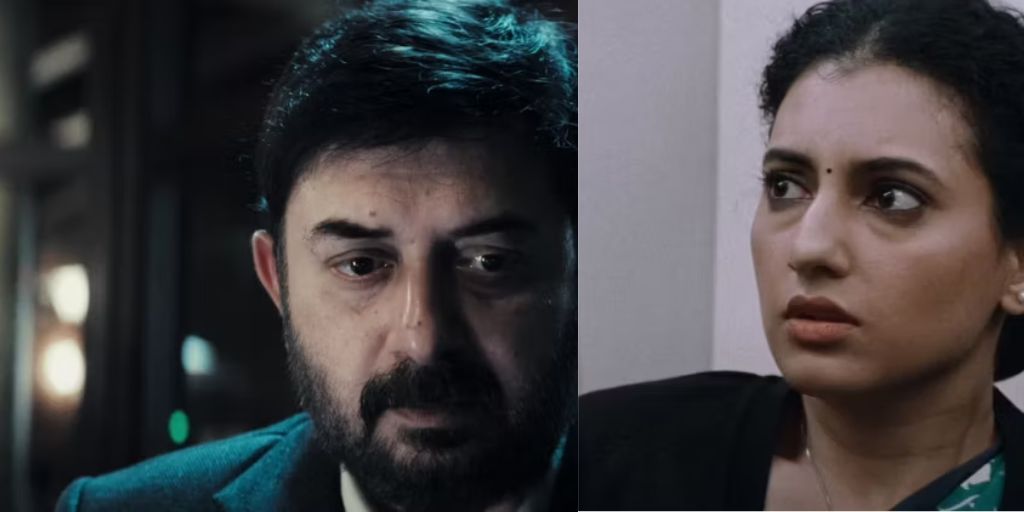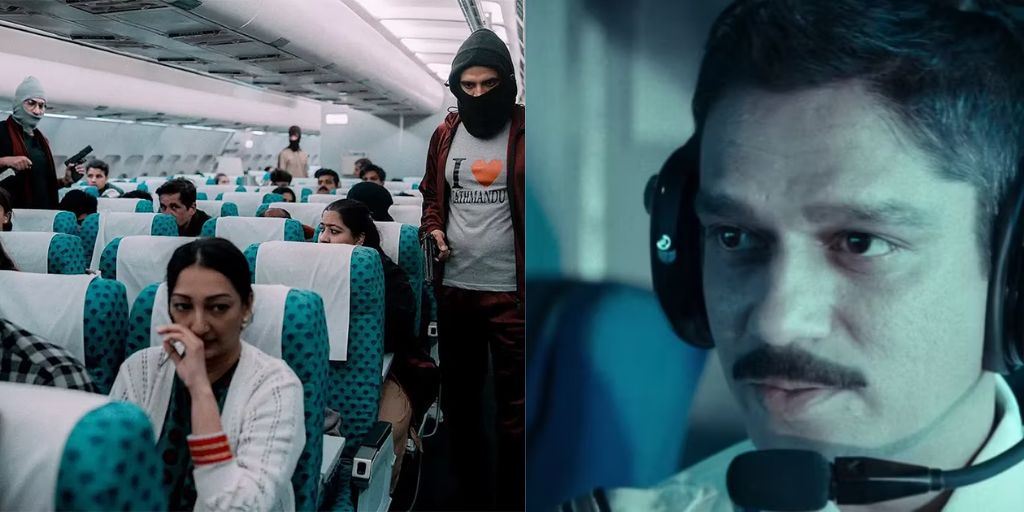Marking his return to television, Indian filmmaker Anubhav Sinha directs “IC 814: The Kandahar Hijack” on Netflix. This series brings to life the real and terrifying story of a hijacking that surpasses even the fictional accounts seen in Apple TV+’s “Hijack.”
The show is based on the book “Flight into Fear – A Captain’s Story” by Captain Devi Sharan, who piloted the ill-fated flight, and journalist Srinjoy Chowdhury. The series chronicles the hijacking of Indian Airlines Flight 814 (IC 814) on December 24, 1999.
Although the hijacking has been featured in several Indian films over the years, this is the first time the story will be adapted for television. The series boasts a stellar cast, including Naseeruddin Shah, Pankaj Kapur, Vijay Varma, Dimple Kapadia, and Arvind Swami.
According to PBS Frontline, the hijacking of IC 814 was part of a larger plan by the pan-Islamist terrorist organization Al-Qaeda, aimed at creating chaos around the millennium celebrations in January 2000. The Netflix series will reveal the factual details and true story of the hijacking, which impacted the lives of 180 passengers on board.
Flight IC 814’s Dramatic Journey
On December 24, 1999, Flight IC 814 was en route from Kathmandu, Nepal, to Delhi, India, with 180 people on board, including crew and passengers.
One of the notable passengers was Roberto Giori, owner of the Lausanne-based company De La Rue Giori, which controlled a significant portion of the world’s currency printing business, according to Time.
The Independent reports that the flight was hijacked by five masked men just 40 minutes after taking off from Tribhuvan International Airport in Kathmandu.

Initially, the hijackers instructed Captain Devi Sharan to enter Pakistani airspace. However, Pakistan’s Air Traffic Control refused permission to land in Lahore, due to the flight’s low fuel. This forced the flight to make an emergency landing in Amritsar, Punjab, India, to refuel.
After landing in Amritsar, the flight requested refueling. Although there were attempts to delay this to allow for a potential intervention by India’s National Security Guards, the hijackers insisted on continuing their journey. Around 7:50 p.m., the flight took off again, narrowly avoiding a collision with a fuel tanker, as reported by Frontline magazine.
Captain Sharan described the situation as dire, with death seeming imminent for all 180 passengers. The plane’s next destination was Lahore, where Captain Sharan made an emergency landing despite efforts by Pakistan’s Air Traffic Control to avoid it.
The Hijackers’ Demands and Negotiations
After refueling in Lahore, IC 814 set its course for Kabul, Afghanistan. Due to Kabul’s lack of nighttime landing facilities, the flight attempted to land in Oman before finally reaching Al Minhad Air Base in Dubai, UAE. At the air base, 27 passengers were released.
Among them was 25-year-old Rupin Katyal, who died from fatal stab wounds inflicted by the hijackers. The flight then continued to its final destination, Kandahar, Afghanistan, where it remained for six days under harsh conditions, with passengers deprived of regular meals and drinking water.
Negotiations for the hostages’ release began once the plane landed in Kandahar. The hijackers, supported by the Taliban, initially demanded the release of 36 prisoners, the body of Harkat-ul-Mujahideen (HuM) founder Sajjad Afghani, and 26 million dollars.
These demands were later reduced to the release of three prisoners: Ahmed Omar Saeed Sheikh, Masood Azhar, and Mushtaq Ahmed Zargar. Ahmed Omar Sheikh is known for his role in the kidnapping and murder of Wall Street Journal reporter Daniel Pearl in 2002. Masood Azhar founded the terrorist group Jaish-e-Mohammed, which is linked to the 2008 Mumbai attacks and the 2016 Pathankot attack.
Previous attempts had also been made to secure the release of these prisoners. For example, Ahmed Omar Sheikh kidnapped four Western tourists from Delhi in 1994. In 1995, he was involved in the kidnapping of six Western tourists and two guides, leading to the murder of five tourists, including Norwegian actor Hans Christian Ostrø.
The Resolution and Aftermath
Eventually, the Indian government agreed to release the three prisoners in exchange for the hostages’ safe return. The Taliban played a significant role in facilitating the safe passage of the hijackers and the three prisoners to Quetta, Pakistan.
In the aftermath of the hijacking, India sought control of security at Kathmandu airport and faced criticism for its handling of the situation and its diplomatic efforts. According to The Guardian, one of the hijackers, Zahoor Mistry, was allegedly killed in Pakistan by Indian intelligence agents.
Director Anubhav Sinha has shared that “IC 814: The Kandahar Hijack” aims to recreate the events with authenticity, portraying them as if they were happening in real-time.
The series includes scenes filmed in various locations, including Jordan, to capture the true essence of the hijacking. It shows the experiences of the passengers and crew, as well as the efforts of the Indian authorities and other involved parties.
The series also goes into the impact of the hijacking on diplomatic relations and security policies. By showing the complex interplay between the hijackers, the Indian government, and the Taliban, it provides a thorough and engaging portrayal of a pivotal moment in history.

This gripping portrayal promises to be both a thrilling and eye-opening experience for viewers. The series promises to provide a gripping and realistic portrayal of the IC 814 hijacking.
By capturing the harrowing experiences of the passengers and the intense negotiations involved, “IC 814: The Kandahar Hijack” offers viewers a compelling and immersive look into this significant historical event.
Watch all episodes of “IC 814: The Kandahar Hijack” on Netflix in the U.S.














